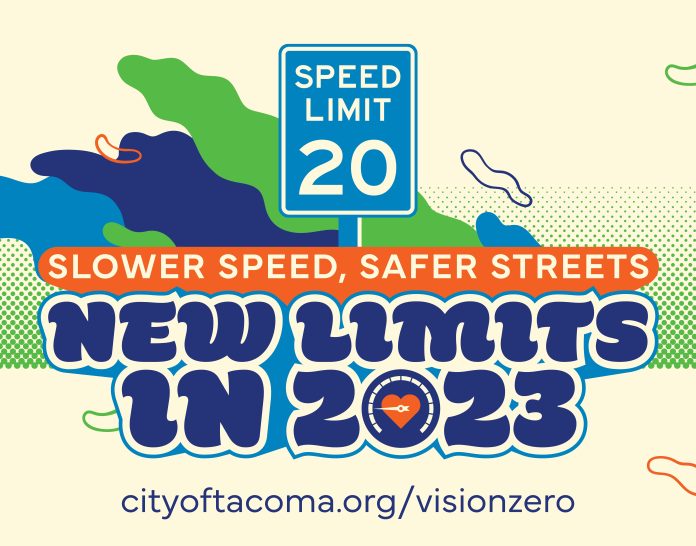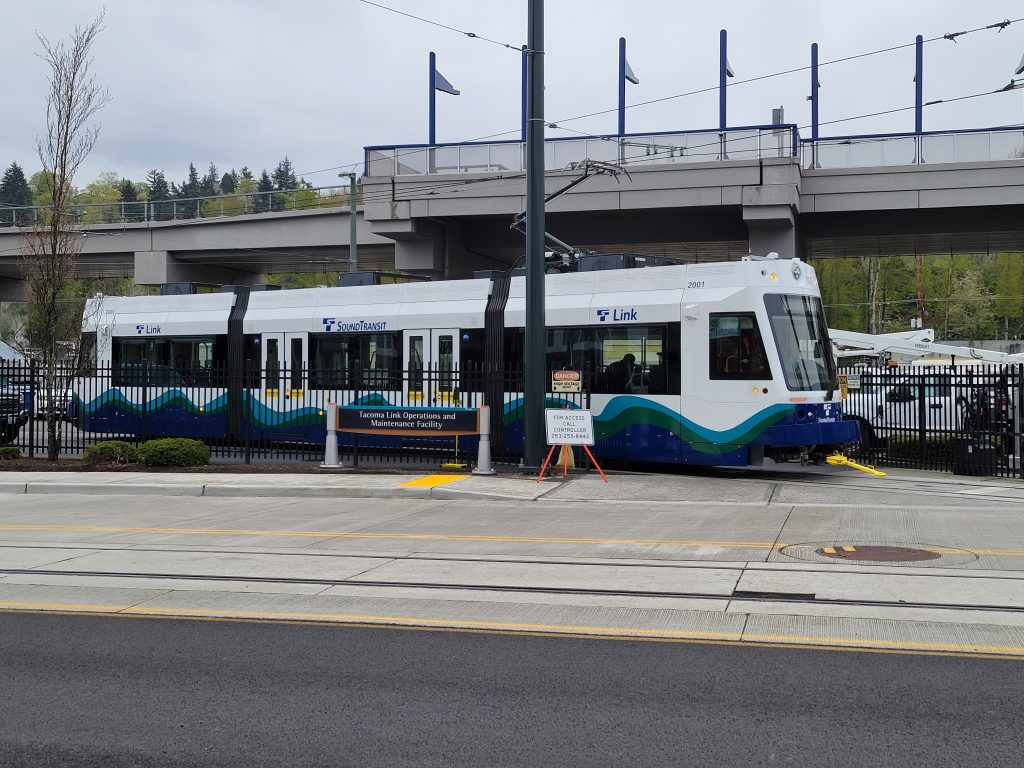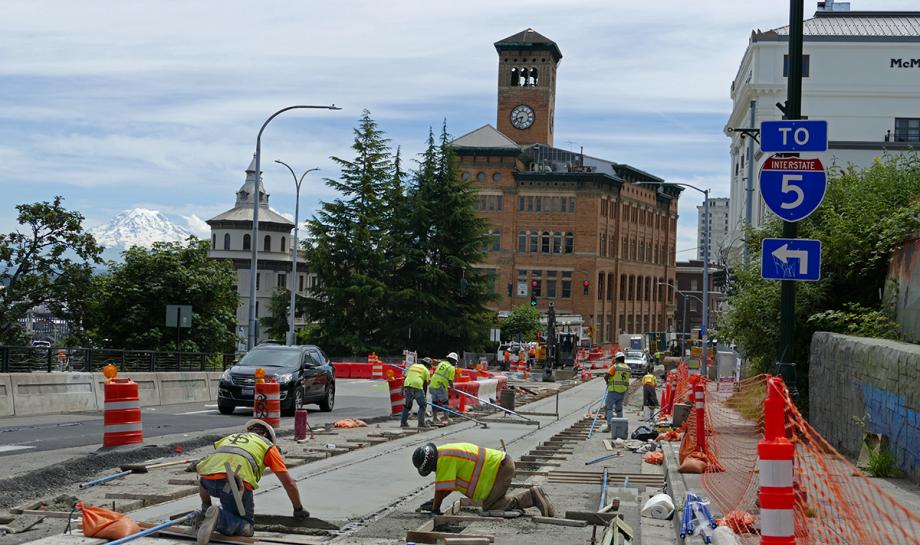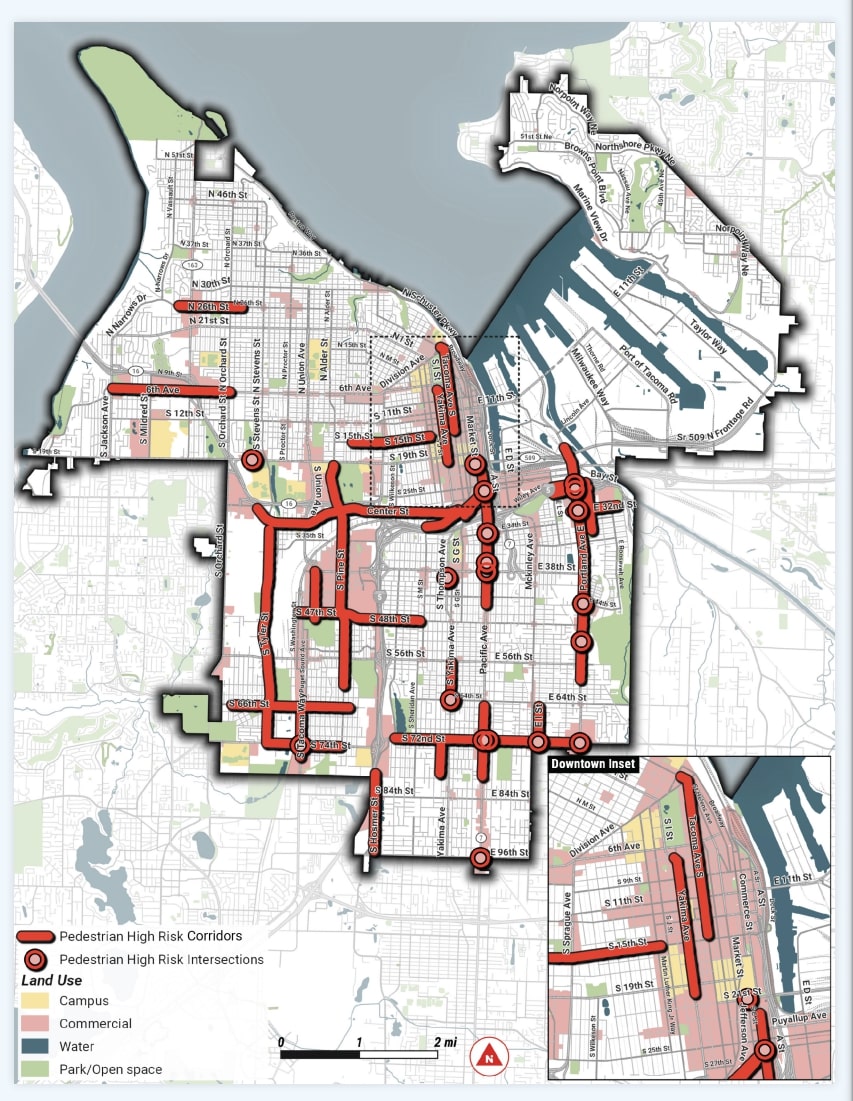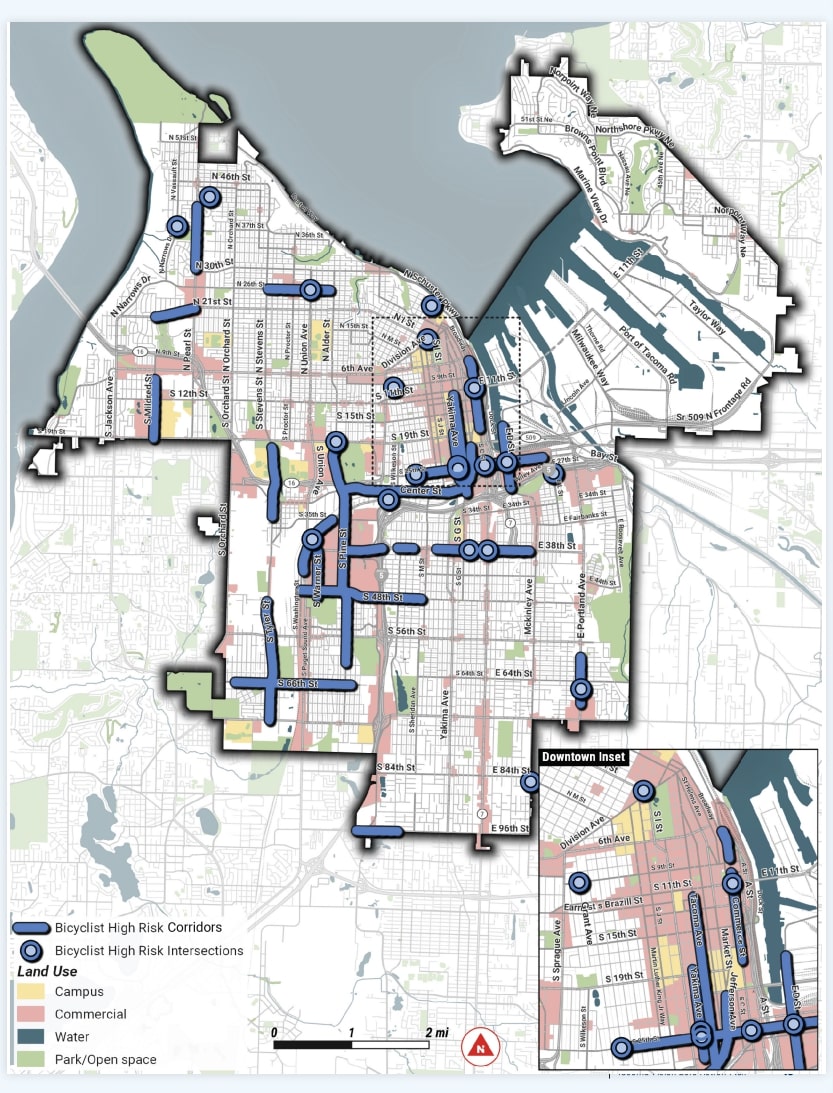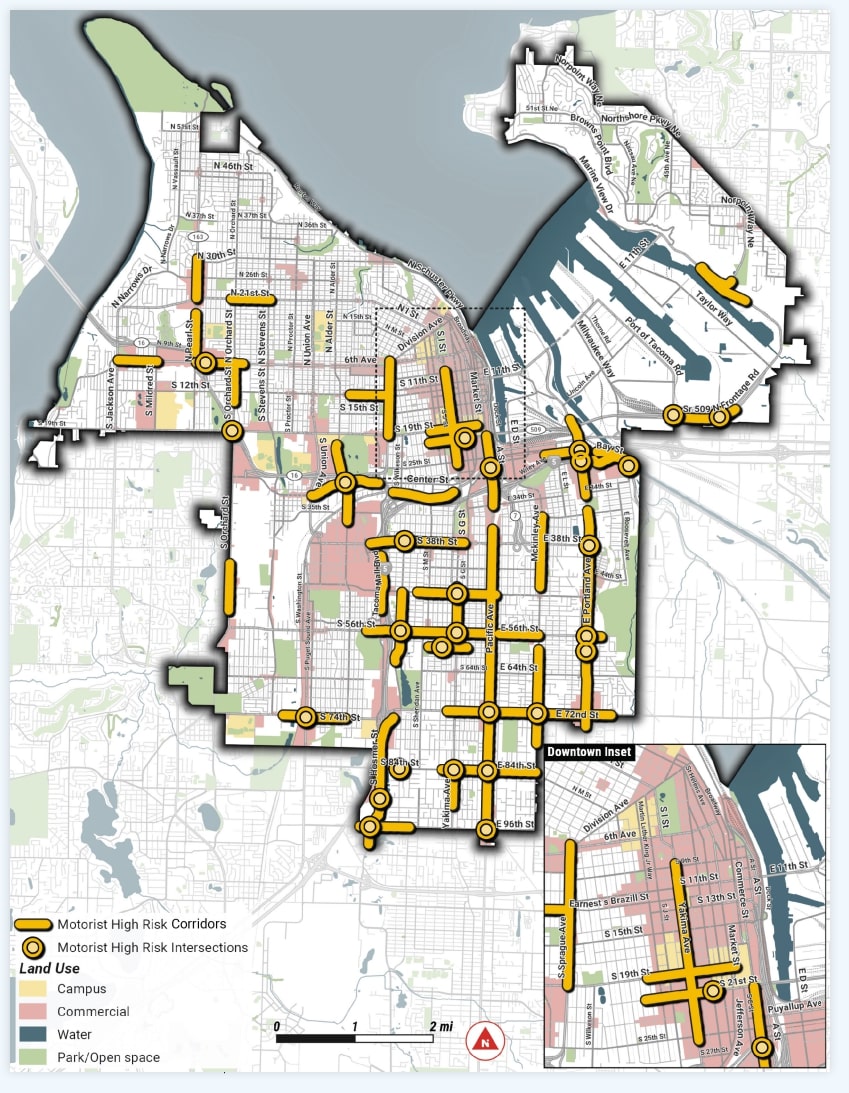2023 is looking to be a significant year for transportation in Tacoma. A number of city-led projects are reaching maturity, like the Hilltop Link streetcar extension, while others are struggling to get off the ground, such as the Pacific bus rapid transit route. These projects aim to increase mobility for Tacoma residents by providing quick, dependable options while making our roads safer for everyone. But, progress on all fronts has been slow and maybe only the patient will be able to see these projects truly come to life.
Grinding Away at the Hilltop Light Rail Extension
Last year, I reported on the Hilltop extension, which aims to double the length of the streetcar line (T Line) in Tacoma. Once complete, it will connect Downtown Tacoma and nearby neighborhoods to the Tacoma Dome and the rest of the Sound Transit network. This past year, Sound Transit received five brand new streetcars and completed most of the track laying.
The expansion was originally planned to open in the first quarter of 2023, but unfortunately it appears that the opening may be delayed. In an announcement in December 2022, Sound Transit CEO Julie Timm said throughout the Fall, a number of issues were discovered and addressed throughout the expansion by construction teams. But in early December, a structural issue was found in one part of the extension, being serious enough that it warranted outside track experts to be called in to investigate.
Timm seemed sensitive to the concerns by residents over the delays, “With this project’s location on city streets in Tacoma, construction impacts have been felt strongly by residents and businesses on the alignment. On behalf of everyone at Sound Transit, we share your feelings of urgency to complete construction.”
I have signed up for Hilltop Extension updates and received construction alerts seemingly every other week in the second half of 2022. It must be frustrating for residents near the project to constantly have to adapt to the changing construction conditions. Additionally, there have been a number of overnight crews conducting loud rail grinding — not a good way to get community buy-in, Sound Transit.
Hopefully, the delay isn’t too severe, but Timm did note in her announcement that Sound Transit’s cushion for opening has been depleted, indicating they may need to request additional resources in order to complete the project. As Sound Transit works to solve issues, testing of the streetcars and rail grind to smooth the tracks will continue during off-hours.
Finally, fares will be coming to the T Line in 2023. Currently, the T Line is fare-free thanks to a partnership with a downtown Tacoma business association. This past October, the Sound Transit Board approved a fare schedule:
- $2.00 Adult
- $1.00 ORCA LIFT (per the current Board-approved pilot)
- $0 Youth
- $1.00 Senior/Disabled
The $2 adult fare aligns with the current Pierce Transit bus fare, simplifying things for travelers. Additionally, Sound Transit aims to work with local human services agencies to identify individuals that would benefit from the ORCA LIFT reduced fare program and mitigate financial burden. The fares will be implemented when the extension fully opens, so enjoy your free rides while you can.
Not So Rapid Transit
In November 2016, Washington voters approved Sound Transit 3, a measure that provided funding for a number of transit projects, with about $60 million going to Tacoma’s bus rapid transit (BRT) project. The project aims to replace Pierce Transit’s most heavily used route, Route 1 (along SR-7/Pacific Avenue), with a 14.4 mile corridor to connect Downtown Tacoma to Spanaway. Pierce Transit notes that Route 1 accounts for 12% of activity for their entire system, indicating just how huge of an impact a faster, dedicated transit line could have.
The following year, the Sound Transit Board approved the project and began designing the route, with service planned to open in 2022.
Surprise, surprise, the BRT did not open in 2022. Due to COVID delays and rising costs, the opening was pushed back a full five years to 2027. But the current state of the project is a shadow of its former self. In the years that construction should have been occurring, the plan was cut down and down.
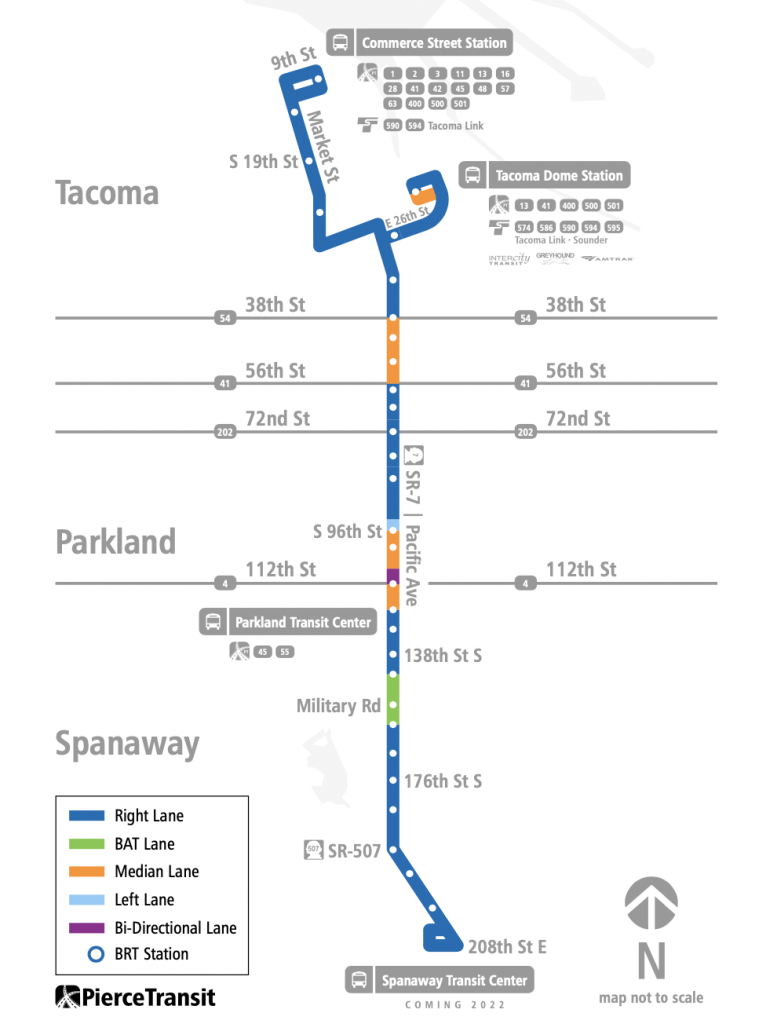
Senior Urbanist Reporter Stephen Fesler noted that in 2019, the proposed BRT line contained over 6 miles of exclusive median BRT lanes in addition to about 1 mile of BAT lanes. Two years later in 2021, this was reduced to 4.5 and 1.0 miles, respectively. Thus, less than half of the current design includes dedicated bus lanes. Exactly how rapid will this be if the bus will spend more than half its route fighting regular car traffic?
Dedicated, exclusive transit lanes are a gold standard of BRT, as the buses would only need to stop for passengers and other transit without interrupting other lanes. The reduction of exclusive BRT lanes indicate Pierce Transit’s real priorities.
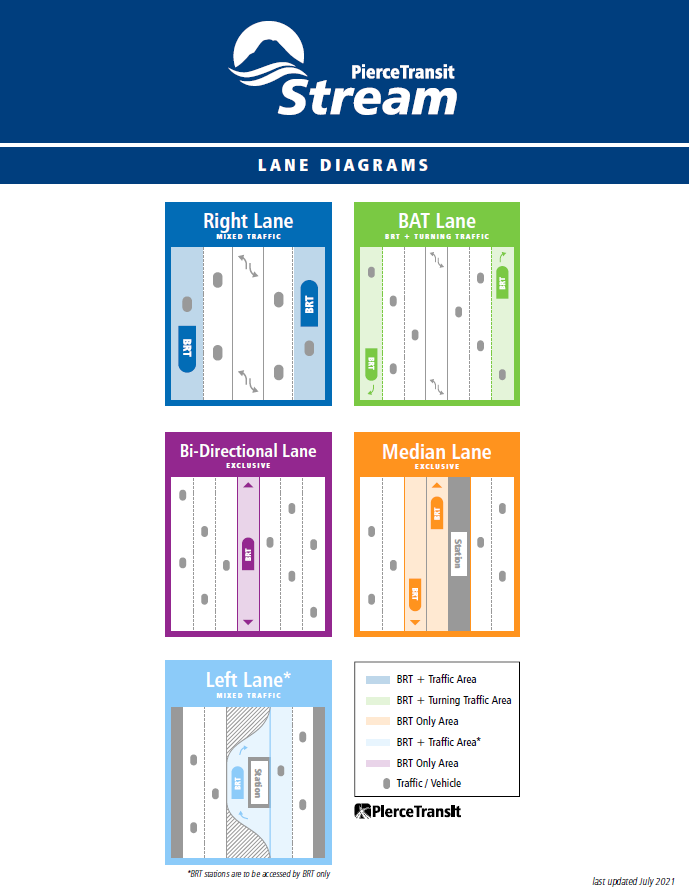
In the map above, highlights an underlying problem in this design: across the BRT route there are 10 transitions in the make up for the lanes. BRT stations move from the median to the curb and back in the span of a few miles. There is a bi-directional lane planned for the middle of this, whatever that is supposed to mean. This all together means that both bus and car drivers need to be ever more aware of their surroundings and the ever changing conditions.
Unfortunately, history has proven this type of “Stroad” (combination of Road and Street) design, is inefficient and dangerous, as noted by Youtuber Not Just Bikes in a video about the phenomena. Essentially, Pacific Avenue is being asked to handle more functional roles than it can actually handle. This overly complex system means drivers must make more decisions and more decisions mean more mistakes.
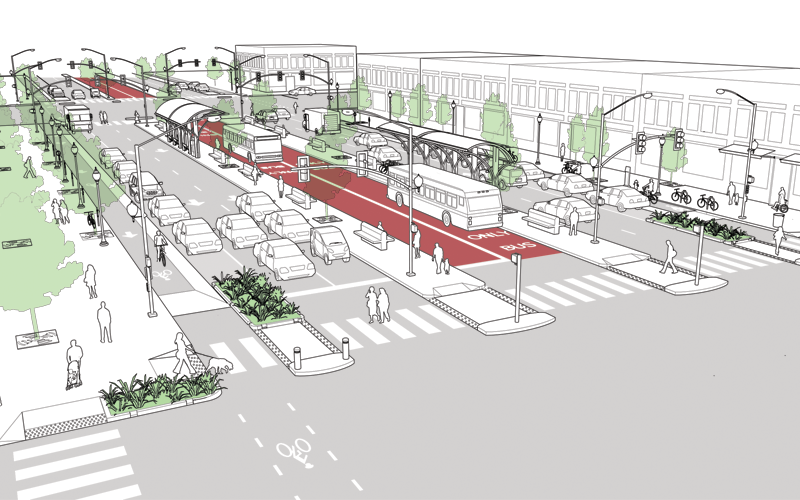
But the project continues to chug along. A Final Traffic Impact Analysis is expected to be concluded in early 2023 as part of federal and state environmental analysis. Following that, a Federal and State Environmental Policy Review will be conducted once the design is 60% completed, likely in the spring. Minor construction is expected to begin this year with property acquisitions and utility relocations. With the opening delayed to 2027, this is one project to keep an eye on over the next few years.
Aiming for Zero
Vision Zero is an international campaign to eliminate all traffic fatalities and injuries globally. First started in Sweden, it grew popular across European cities before leaping over the pond to American cities. In the US alone, over 42,000 people are killed due to motor vehicle related events each year. That is just under 20% of Tacoma’s population, practically a person in every household. Tacoma recognizes this is an issue in our city as well, with the City Council passing Resolution 40559 in 2020, committing to eliminating all traffic deaths by 2035.
In a letter of support for the initiative, Mayor Victoria Woodards writes that the increasing road safety may encourage more people to bike or walk to destinations, aligning with other city projects. Further, she states that Tacoma is particularly committed to equity in actualizing this initiative, stating “…while the toll of traffic collisions affects our entire community, it does not affect everyone equally: 75% of our highest risk streets in Tacoma are in areas with low or very low access to opportunity according to the City’s Equity Index.” You can view the Tacoma’s crash data on their Vision Zero Dashboard.
In public engagement events and surveys throughout 2021 and 2022, the City found some salient concerns among Tacoma residents. Concerns included:
- Lack of facilities for safe walking, rolling and biking
- Lack of accessible transit
- Substandard or missing sidewalks
- Lack of accessibility for those with mobility issues
- Drivers drive too fast
- Drivers are distracted
- Lack of trust in the government
It is clear to see that while some of these concerns are the responsibility of the City, it falls upon Tacoma residents to change their mindsets around driving in our city. By improving the road infrastructure, instituting transportation policy changes and engaging with the community, the City hopes to shift norms and our physical city towards a culture and environment of safe mobility.
The Tacoma Vision Zero Action Plan details the situation of crashes in the City and provides 25 different actions to be implemented in the coming years to build out different components of this initiative. Some have already been completed, such as the data dashboard linked above and implementation of 20 miles per hour speed limits in residential neighborhoods and 25 miles per hour in the business districts like Proctor and Lincoln as of January 1, 2023. You can view a map of speed limits for every street in Tacoma here.
Additional actions listed in the plan include: obtaining funding for maintenance and improvements, hiring dedicated staff, updating right-of-way policies to prioritize pedestrians, creation of checklists for sub-projects that prioritize safety above all else, continuous public engagement and many other actions that seek to increase overall safety on the roads.
The City notes that an analysis of crash data found that a majority of fatalities and injuries related to crashes occur along arterial streets, clearly marking these as a focal point in the City’s efforts. Beyond simply changing the speed limits on those roads, driver behavior needs to be adjusted as well.
Thus, for the remainder of 2023, we may not expect much large-scale construction around this issue. The city will focus on engagement, education and enforcement to begin to shift driver behavior. A study is planned for the summer to evaluate the efficacy of these changes. Hopefully, the results are positive and we begin seeing the effects sooner than 2035.
Looking into the realm of transportation in 2023, a lot of movements are being made to make it easier and safer to get around the main destinations in Tacoma. While many residents only see constant delays and additional budget requests, the City is taking steps to improve our community. Time will tell how effective these measures will be.
If you would like to comment on or learn more of any of these ongoing projects, please see below:
- Hilltop T Line Extension page on Sound Transit’s website or contact htlink@soundtransit.org
- Bus rapid transit page on Pierce Transit’s website or contact BRT@piercetransit.org
- Vision Zero page on City of Tacoma’s website or contact cwilhelme@cityoftacoma.org

Kevin Le (Guest Contributor)
Kevin Le is a Geographic Information Science (GIS) master's student at the University of Southern California. He moved to Tacoma a few years to go to UPS and has stuck around ever since. He's interested in how we can use spatial data to understand our urban landscape and build better cities for everyone.

